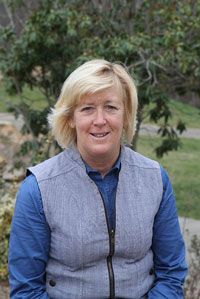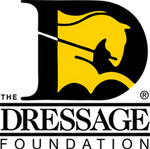Sarah Geikie: "What Judges Look for at Training and First Level"

What do judges look for at Training and First Level? This is a very interesting question, one that I am asked very frequently by riders. Many riders at these levels, especially riders new to dressage are not aware that there is a 'roadmap for dressage training.' It is called the Pyramid of Training. This guide is not only for riders and trainers to abide by, but it also provides the framework for which judges evaluate dressage tests. For every movement in a test, the judge must make a decision on whether the criteria for the movement has been met. For example, the first movement of the test is enter working trot, halt, salute, proceed working trot. The essence of that movement is the straightness on the centerline, the transitions into and out of the halt, and the quality of the halt itself. Additional elements of this score are the quality of the trot before and after the halt, the overall balance of the horse, both lateral and longitudinal, and well as the quality of the connection. The elements of the Pyramid of Training; rhythm, relaxation, suppleness, contact, impulsion, straightness, and collection, are guidelines the judge uses to determine how well the horse and rider have fulfilled the criteria for the movement.
A day of judging for the dressage judge involves the judge literally making thousands of decisions to come up with the right mark and score for each horse. The big joke at the end of a show day is a group of judges going out to dinner. No one can make a decision on what to order because we have used up our quota of decisions!
At these beginning levels, Training and First Level, the foundation for the education of the dressage horse is being laid down. It is of vital importance that the correct foundation is established for the horse, as well as the rider. What dressage judges are really looking for is correct riding and correct training. So the question becomes, “What does correct riding and training look like from the view at C?”
First of all, we should see that there is a clear communication system that is understood between the horse and rider. The rider has learned to use light, supple aids, both with the legs, seat and hands. The rider has trained the horse to react to small leg aids, the use of the weight aid and an invisible rein aid. As a result of this communication, the rider is able to establish relaxed acceptance of the aids. In turn, this provides the rider with the necessary tools to develop a clear rhythm and consistent tempo, and a soft acceptance of the contact.
So far, correct riding looks relaxed, rhythmic, and harmonious.
At Training Level, the judge is expecting to see that the horse can easily fulfill the requirements for this level. That is to say the horse goes freely forward, with acceptance of the aids and bit. The horse demonstrates that it can move in a level balance, shows correct bend on twenty meter circles, in corners, and can manage progressive, balanced transitions.
At First Level, judges expect to see a horse that has developed more strength and suppleness, so is able to move in an uphill balance. A First Level horse is also able to do less progressive transitions, such as trot-halt, leg yields, smaller circles, and lengthenings.
Let's take a closer look at the rider now. The position, balance and independence of the rider's aids play a deciding factor on the success and quality of the training. The rider has a responsibility to learn to sit correctly and in balance 100% of the time. A crooked rider creates a crooked, stiff horse, resulting in confusion in the communication system. A rider that is dependent on their hands and stirrups for balance can never train a horse to balance itself.
Judges hate to see rough riding, with harsh, obvious aids that are working out of rhythm and balance with the horse. This kind of riding lacks harmony and is painful to watch.
Another offshoot of incorrect aids on the part of the rider is inaccurate figures, such as falling in or out of corners, circles not round, geometry slipshod. Riding accurate figures is the only way a rider can develop suppleness in the horse. At Training Level, the degree of bend is really very small. Judges expect to see that the horse's body conforms to the path that it is following. This establishes balance. Later on at First Level, where there is an increase in bending lines, there should be more suppleness in the horse.
Another thing that judges expect to see is that the horse is shown and presented at the appropriate level. The rule of thumb is that the horse should show one level down from the level he is training at home. So, if the horse is schooling Second Level at home, show First Level. The judges do not want to see the horse struggling. We want to see a horse performing with confidence, trust in the rider and in an easy balance.
In conclusion, judges want to see a horse presented at a level where the horse is securely confirmed at that level. The horse will be confident, balanced, and relaxed. The movements will look easy for him, not difficult. The balance and suppleness has been developed so that even at this level, the gaits will start to be improved.
The rider will present themselves in a quiet, balanced position. The aids will be invisible. The emphasis in the aiding system will be on the seat, weight, legs and least important the hands.
One of the best things for a rider to do is volunteer to scribe at a show. By doing this, you will see the point of view of the judge, and most likely be mildly shocked! The view from C is very different from what you would expect, but it is one that when experienced, will change your ideas about dressage tests.
The role of the judge is to serve as a mirror for the rider. The judge must make it clear to where the horse and rider stand and determine if they are up to the standard for their level. What are the strong points, what are the weak points, what areas need to be improved? The other role of the judge is to adhere to the principles of dressage and to make sure that these principles are followed as intended, and do not become watered down. The last and very most important job of the judge is to be a protector for the well-being of the horse.
About Sarah Geikie...
Sarah Geikie is a USDF Bronze and Silver Medalist, and successful competitor through Grand Prix. She is an FEI**** (C) Dressage Judge, USEF S Judge and a USDF Examiner and Faculty Member, who is also certified through Fourth Level.Sarah was the 2011 recipient of TDF's Major Anders Lindgren Scholarship for Dressage Instructors.
